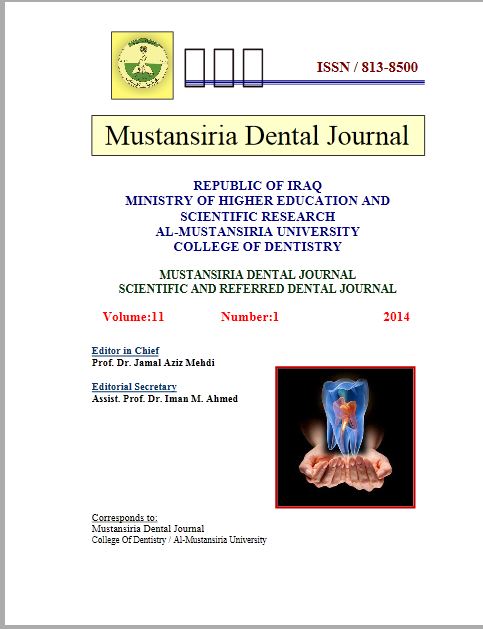Evaluation of the amount of apically extruded debris using different root canal instrumentation systems
DOI:
https://doi.org/10.32828/mdj.v11i1.219Keywords:
Keywords: Apical extrusion, Rotary systems, Single-file systems, NiTi instrumentsAbstract
The purpose of this study was to evaluate the amount of apically extruded debris
using 5 types of nickel–titanium endodontic instruments (Hand ProTaper, Rotary
ProTaper, Rotary Mtwo, RECIPROC and WaveOne). Seventy-five freshly extracted
mandibular premolar teeth were used in this study. All teeth were shortened to a
length of 14mm. The specimens were randomly divided into five groups (each group
containing 15 samples) according to the type of instrumentation systems used. Group
I: instrumented by hand ProTaper system (Hand technique). Group II: instrumented
by rotary ProTaper system. Group III: instrumented by rotary Mtwo system. Group
1V: instrumented by single file RECIPROC system. Group V: instrumented by single
file WaveOne system. Debris extruded from the apical foramen was collected into
pre-weighed glass vials. The difference between the weights of vial (pre-weight and
post-weight) represented the weight of debris extruded from apical foramen during
canal preparation. The results showed that all groups induced extrusion of debris,
Mtwo group (III) has statistically the lowest mean value of apically extruded debris in
comparing with all other groups, followed by rotary ProTaper (II), hand ProTaper (I),
and WaveOne (V) groups respectively. While the RECIPROC group (IV) has
statistically highest mean value.

Downloads
Published
Issue
Section
License
The Journal of Mustansiria Dental Journal is an open-access journal that all contents are free of charge. Articles of this journal are licensed under the terms of the Creative Commons Attribution International Public License CC-BY 4.0 (https://creativecommons.org/licenses/by/4.0/legalcode) that licensees are unrestrictly allowed to search, download, share, distribute, print, or link to the full texts of the articles, crawl them for indexing and reproduce any medium of the articles provided that they give the author(s) proper credits (citation). The journal allows the author(s) to retain the copyright of their published article.
Creative Commons-Attribution (BY)








